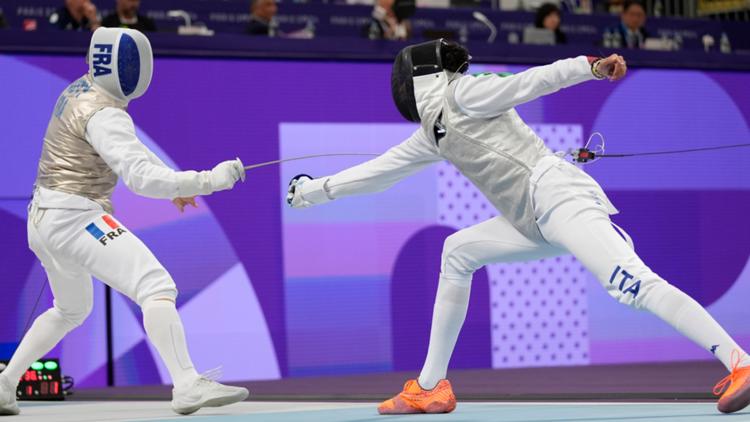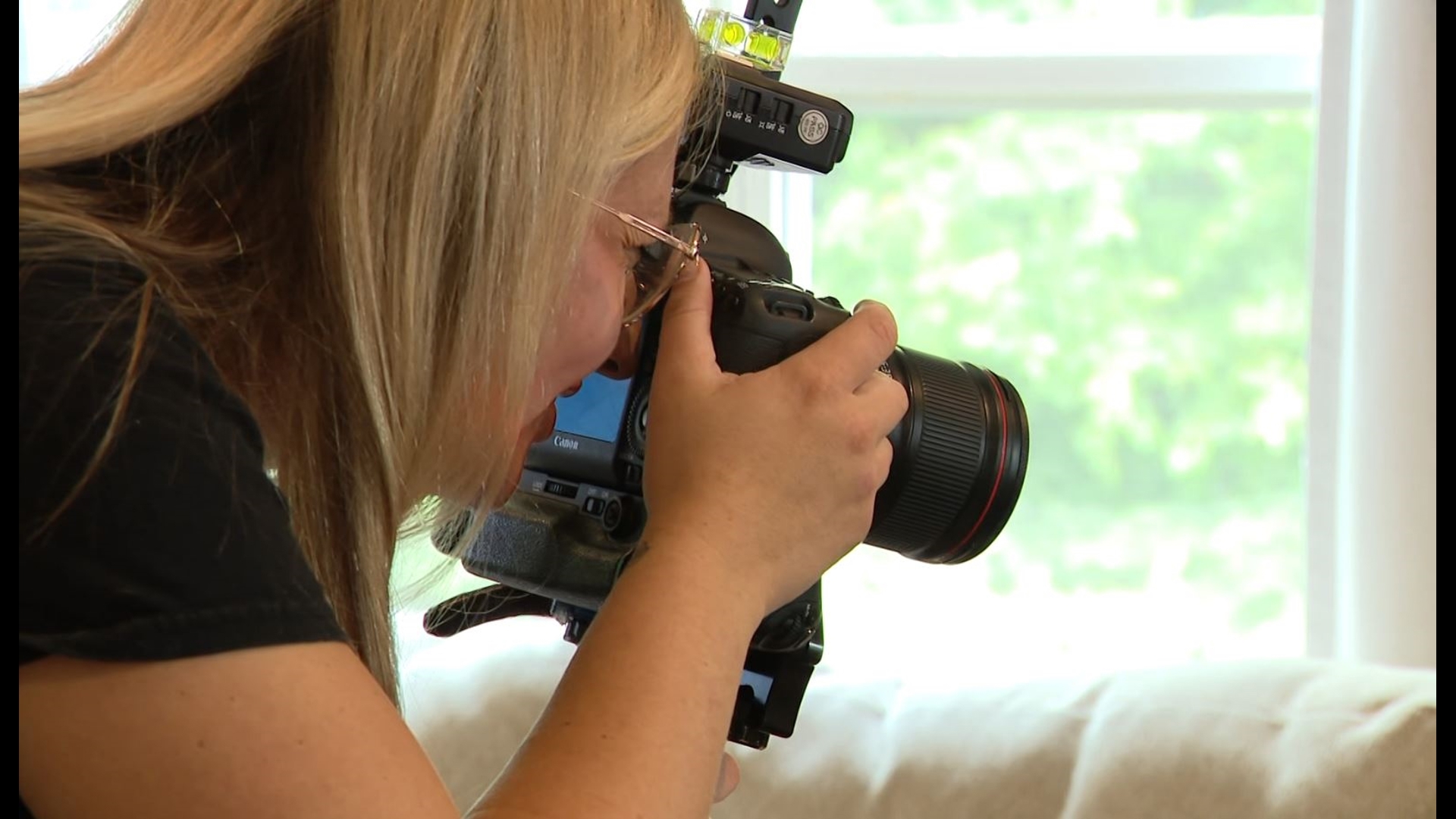PARIS, France — Fencing is one of just a handful of sports that has been at every iteration of the modern Olympics, but despite its Olympic longevity, fans might need a refresher on the rules.
There are several disciplines of this sport that evolved from sword-fighting, and while they might look similar, there are some key differences.
Here's what to know about fencing at the Olympics:
Why are fencers attached to a cable?
It's not to help keep the fencers upright or pull them back. It all comes down to scoring.
Electrical scoring was introduced as early as 1933 to fencing competition. Because accurate judging would be nearly impossible with the naked eye, the cable — called a body cord — connects to the fencer's uniform and their sword to register when the fencers score.
Here's how it works: when the sword successfully makes contact with the opponent's lamé, an electrically conductive garment worn over the scoring area for each fencing sword type, an electrical circuit is completed and registers the point.
Fencing equipment at the Olympics
Quite a bit goes into fencing uniforms to keep the athletes safe.
Masks, which for the Olympics are typically made of stainless steel, must pass a 12-kilogram "punch test" and neck bibs are made of Kevlar or other strong synthetic fibers.
The rest of the equipment includes a jacket, a base layer known as a plastron that stretches down the sword arm, a glove for the sword hand, breeches or short trousers and socks. Women are required to wear a plastic chest protector under the jacket, and some men choose to wear one but they are not required.


What are the different types of fencing?
There are three fencing disciplines at the Olympics, which each have different rules, techniques and scoring.
Foil and epée are "thrusting" only, which means only the tip of the blade counts. In foil, the target area is the torso, which is covered by the lamé.
In epée, the weapon is significantly heavier, and the entire body is a target area.
Sabre is different. The blade is a "thrusting" and "cutting" weapon, which means the entire blade can score if it makes contact with the target area. In this discipline, the target area consists of the entire upper half of the body, including the face mask and neck bib, which are all covered in the conducting material.


Fencing events ahead at the Paris Olympics
Tuesday, July 30, 1:30 p.m. ET: Women's Team Epee Bronze/Gold Finals
Wednesday, July 31, 1:30 p.m. ET: Men's Team Sabre Bronze/Gold Finals
Thursday, August 1, 1:00 p.m. ET: Women's Team Foil Bronze/Gold Finals
Friday, August 2, 1:30 p.m. ET: Men's Team Epee Bronze/Gold Finals
Saturday, August 3, 1:00 p.m. ET: Women's Team Sabre Bronze/Gold Finals
Sunday, August 4, 1:10 p.m. ET: Men's Team Foil Bronze/Gold Finals



